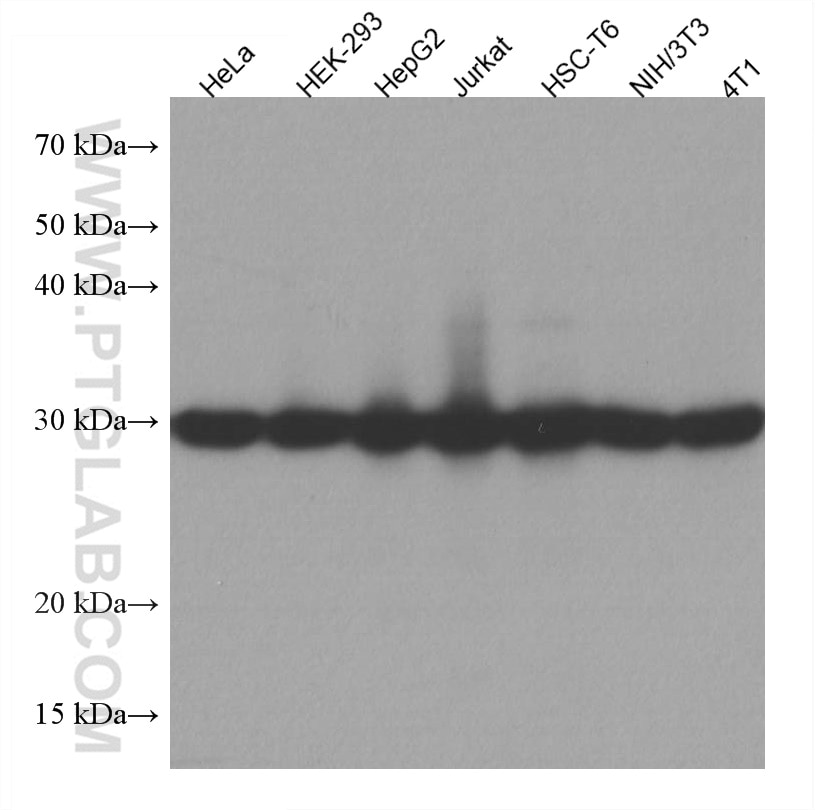Validation Data Gallery
Tested Applications
Recommended dilution
| Application | Dilution |
|---|---|
| It is recommended that this reagent should be titrated in each testing system to obtain optimal results. | |
Product Information
67470-1-PBS targets PGAM1 in WB, IHC, IF/ICC, ELISA applications and shows reactivity with Human, Mouse, Rat samples.
| Tested Reactivity | Human, Mouse, Rat |
| Host / Isotype | Mouse / IgG1 |
| Class | Monoclonal |
| Type | Antibody |
| Immunogen |
CatNo: Ag9250 Product name: Recombinant human PGAM1 protein Source: e coli.-derived, PET28a Tag: 6*His Domain: 1-254 aa of BC011678 Sequence: MAAYKLVLIRHGESAWNLENRFSGWYDADLSPAGHEEAKRGGQALRDAGYEFDICFTSVQKRAIRTLWTVLDAIDQMWLPVVRTWRLNERHYGGLTGLNKAETAAKHGEAQVKIWRRSYDVPPPPMEPDHPFYSNISKDRRYADLTEDQLPSCESLKDTIARALPFWNEEIVPQIKEGKRVLIAAHGNSLRGIVKHLEGLSEEAIMELNLPTGIPIVYELDKNLKPIKPMQFLGDEETVRKAMEAVAAQGKAKK 相同性解析による交差性が予測される生物種 |
| Full Name | phosphoglycerate mutase 1 (brain) |
| Calculated molecular weight | 254 aa, 29 kDa |
| Observed molecular weight | 29 kDa |
| GenBank accession number | BC011678 |
| Gene Symbol | PGAM1 |
| Gene ID (NCBI) | 5223 |
| RRID | AB_2882699 |
| Conjugate | Unconjugated |
| Form | |
| Form | Liquid |
| Purification Method | Protein G purification |
| UNIPROT ID | P18669 |
| Storage Buffer | PBS only{{ptg:BufferTemp}}7.3 |
| Storage Conditions | Store at -80°C. |
Background Information
PGAM1(phosphoglycerate mutase 1) is also named as PGAMA,PGAM-B and belongs to the phosphoglycerate mutase family. Phosphoglycerate mutase is widely distributed in mammalian tissues where it catalyzes the reversible reaction of 3-phosphoglycerate (3-PGA) to 2-phosphoglycerate (2-PGA) in the glycolytic pathway. The homodimer PGAM1 is expressed mainly in liver, kidney, brain and overexpressed in a variety of human cancers, including breast carcinoma, colorectal cancer, lung cancer, prostate cancer, oral squamous cell carcinoma, esophageal squamous cell carcinomas and also associated with certain virus infection. PGAM1 could be developed as a useful diagnostic biomarker, as well as a potential therapeutic target for hepatocellular carcinoma (PMID:20403181). This antibody may also recognize PGAM2 and PGAM4 due to the high homology.





